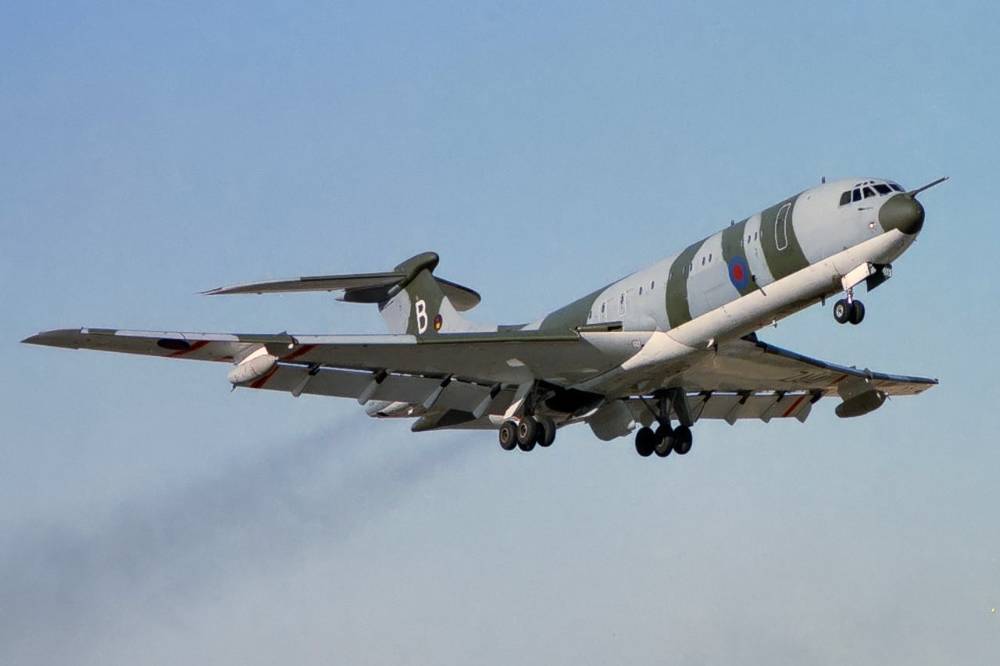
Image courtesy of Hedley Molland
A Short History
Although now best known as a tanker squadron, a role it has maintained since 1984, 101 Squadron had previously had a long and illustrious history as a bomber squadron. During its existence it has set many “firsts” (and a smaller number of “lasts”) that will be recorded below. No 101 Squadron was formed at Farnborough on 12th Jul 1917, as the RFC’s second night bomber squadron. Within two weeks the squadron had deployed to France. It was equipped with the FE2b.
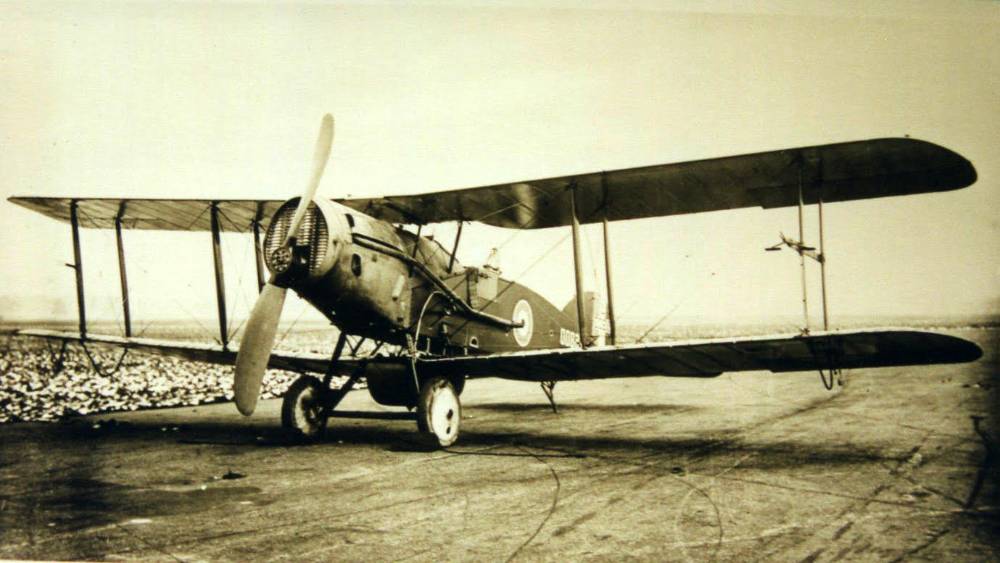
Bristol F2B
Image Crown Copyright
The F2B would be retained throughout its wartime service. Although it was obsolescent in most roles, its long range was beneficial in night bombing and night vision was not damaged by exhaust glare because of the rear-mounted engine. A special duties flight was equipped with BE12 for clandestine operations.
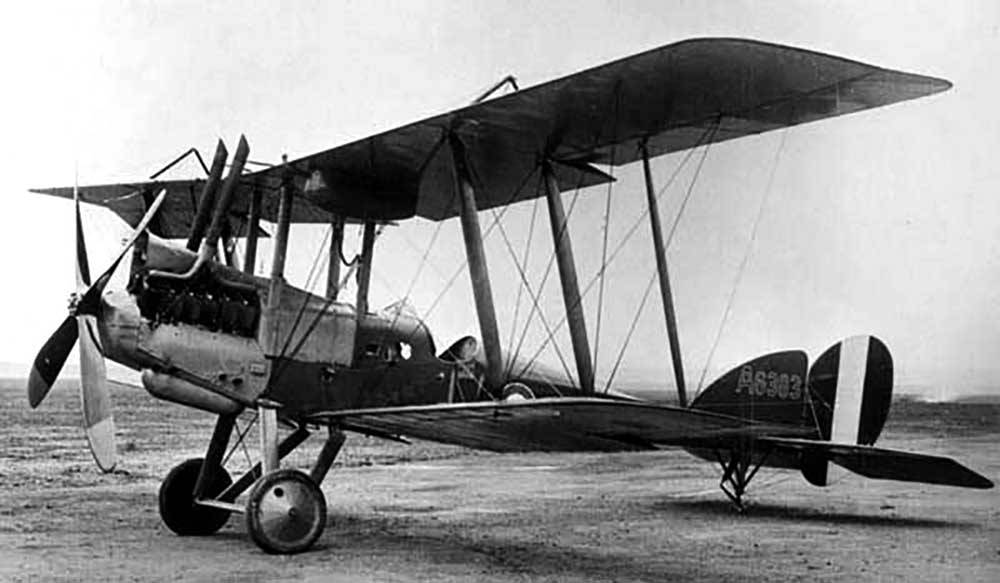
BE2
Representative image Courtesy of WW1 Heritage Aviation Trust
Despite nine moves during 16 months of wartime service, 11 months were spent at 2 locations. From 1st September 1917 to January1918 it was at Clairmarais South, east of St Omer. From here it could support the Flanders front including the area around Ypres. From April to September 1918 it was at Famechon east of Abbeville from where it could cover the German offensives of spring and early summer.
After the armistice the squadron settled at Morville, SE of Charleroi and suffered a slow reduction in the number of men and machines before a move to Filton in March 1919. Here the remaining aircraft were disposed of as scrap, and the men were demobilised or posted, as a prelude to a formal disbandment at Eastleigh on the last day of the year.
The squadron was dormant for 8 years before being reformed at Bircham Newton, on 21st March 1928, as the only squadron to operate the RAF’s first twin-engined day bomber, the Boulton Paul Sidestrand.
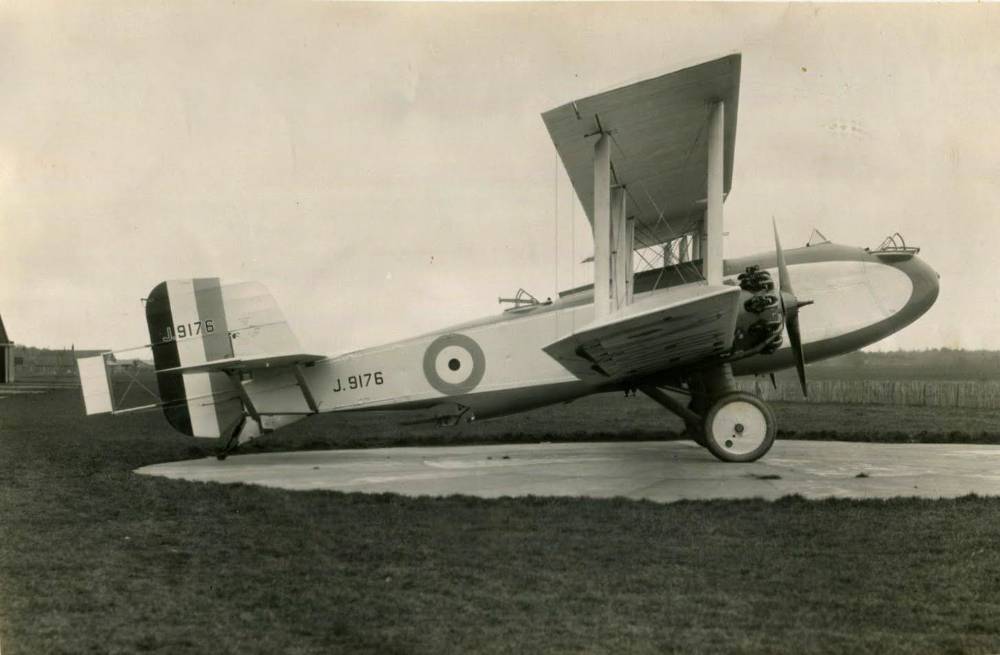
Boulton Paul Sidestrand
Image Crown Copyright
The development of the Sidestrand was slower than expected and for the first year DH9As had to be used to maintain crew proficiency. However, when operations finally started, in the spring of 1929, the Sidestrands soon achieved unprecedented accuracy in bombing competitions. Despite looking ungainly to modern eyes, the Sidestrand was surprisingly manoeuvrable and was able to hold its own against the contemporary Bulldog, Siskin, Demon and Fury fighters in fighter affiliation training. In addition to it’s day bombing role the squadron also exercised in the anti-shipping role. In late 1934 the squadron redeployed to RAF Bicester in preparation for a change of aircraft.
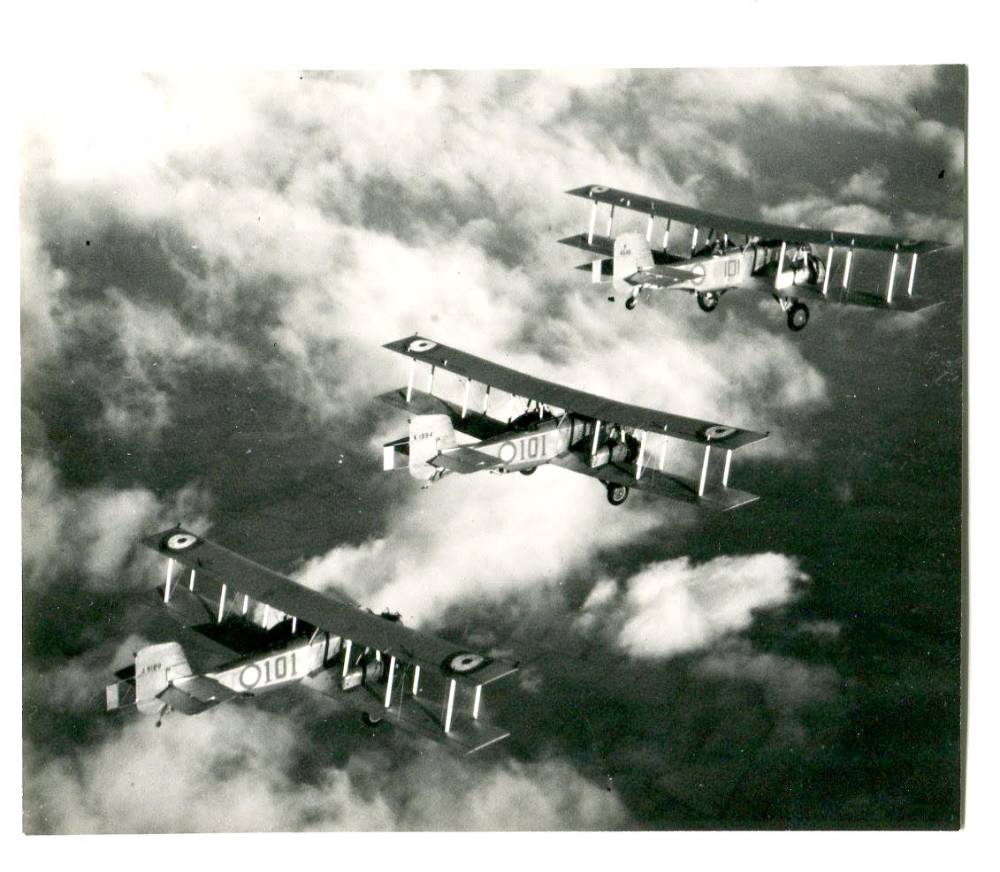
Sidestrand and Overstrand
Image Crown Copyright
The new aircraft was the Boulton Paul Overstrand. Of similar configuration to the Sidestrand, the Overstrand had more powerful Bristol Jupiter engines but most noticeably an enclosed cockpit and the first ever power-operated turret, mounted in the front. The latter feature is commemorated in the squadron crest. The transition to the Overstrand was protracted and despite the first operational aircraft being delivered in January 1935 it wasn’t until nearly 2 years later that a full operational complement was available. By this time the aircraft was obsolescent By 1938 the expansion and re-equipment of the RAF was well under way and in June 1938 it came to 101 Sqn’s turn to convert to the Blenheim I.
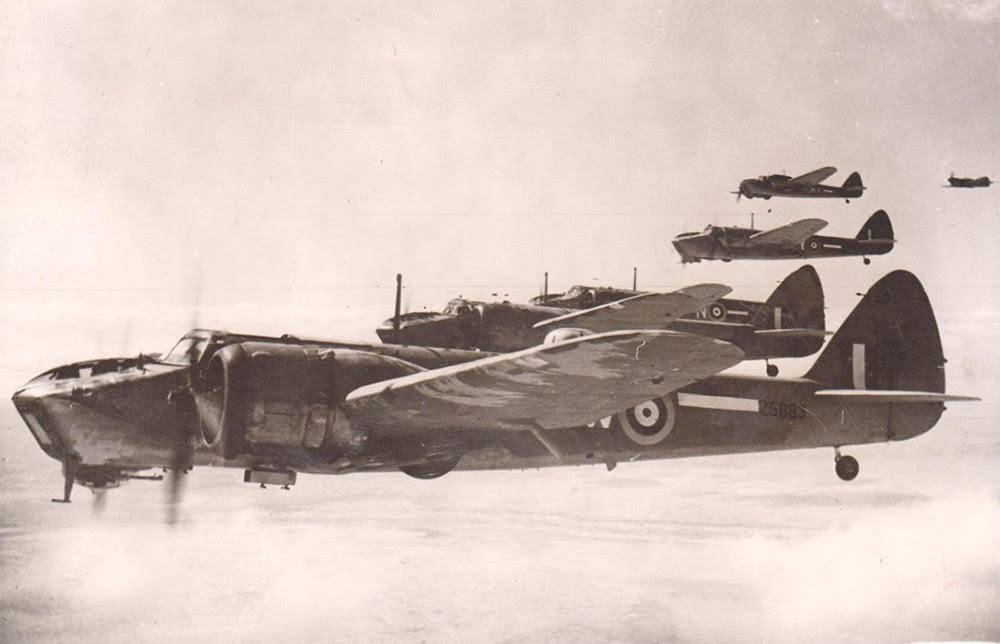
Image Crown Copyright
and then in April 1939 to the Blenheim IV, with which it went to war. On 9th May 1939 the squadron moved to West Raynham, where it would stay for the remainder of its Blenheim operations. With the general mobilisation 101 Squadron was chosen to be No 2 Group’s Reserve Squadron. In this role the squadron converted crews from Blenheim I to Blenheim IV, provided operational training and supplied replacement crews for the Group’s 6 operational Blenheim IV squadrons. The end of the “phoney war” saw 101 Sqn return to operational status, with operations starting in early July. Targets were largely coastal installations and airfields in the channel and North Sea areas. In the first half of 1941 the squadron conducted sorties against shipping in the channel, supported by fighters. The dual aim of these sorties was to close the channel to German ships and to bait the Luftwaffe into combat with the fighters.
By 1941 the Blenheim was significantly outclassed in operations in Europe and in April the squadron began to receive the Wellington Ic, becoming fully operational at Oakington in early July. A move to Bourne in February 1942 coincided with re-equipment with the Wellington III. The longer range of the Wellington allowed increased tasking against target in Germany and included participation in the first “1,000 bomber raid” on Cologne on 30th May1942. July and August was very costly to the squadron with the loss of 14 aircraft and almost all of their crews. A temporary move to Stradishall in August was followed in September by a move to Holme-on-Spalding Moor to receive the Lancaster.
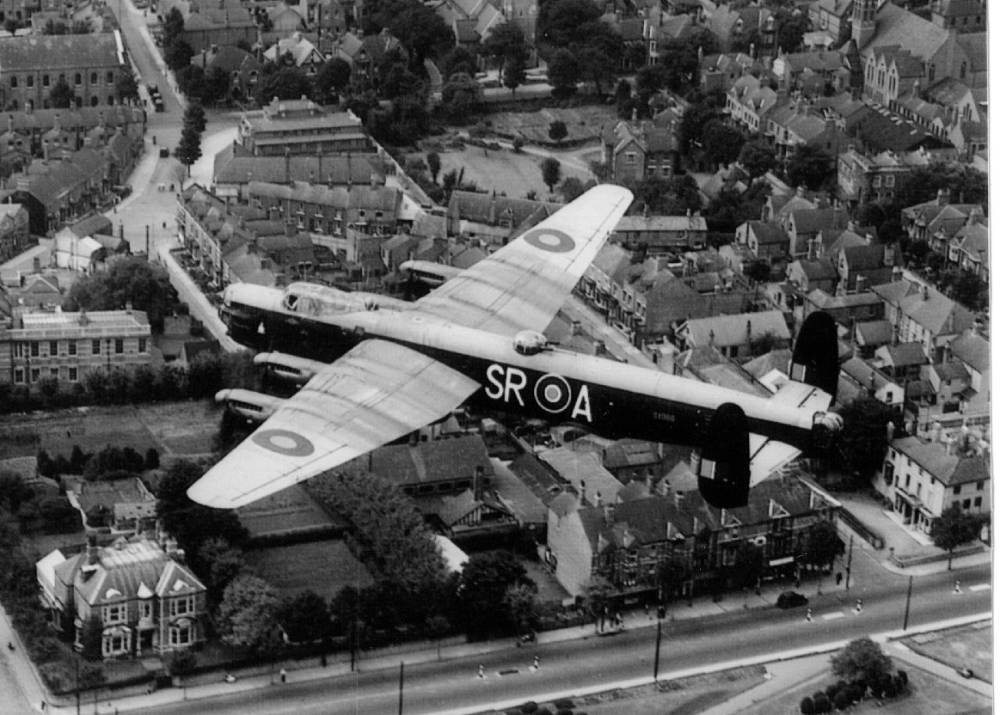
Lancaster
Crown Copyright
On 20th November1942 the squadron flew No 1 Group’s first Lancaster operation when 8 aircraft were sent to Turin. During the following winter and spring there was a continuous programme of operations against targets in Germany and Northern Italy. This was accompanied by a continuing loss of aircraft and crews, including 7 in April 1943. In June 1943 the squadron moved to Ludford Magna from where it would operate for the remainder of the war. Soon after, not for the first or last time 101 Sqn was chosen to introduce a new capability to the RAF’s inventory. 101 Sqn’s Lancasters were equipped with ARI 5558 Airborne Cigar (ABC). This equipment suite consisted of one vhf receiver and three vhf transmitters..The equipment was operated by a German-speaking special operator and provided the capability to monitor and jam the vhf transmissions supporting the Luftwaffe night fighters. ABC was first used on the 22nd September 1943 raid on Stuttgart.
As a result of its unique capability, 101 Squadron was tasked for every major raid for the remainder of the bomber offensive and the invasion of Europe. To meet these demands, it became the largest RAF squadron with over 40 aircraft. The ABC equipment and operator added 1000 lbs to the weight on the aircraft but left the bomb-bay unaffected, so the ABC aircraft participated in the bombing but with, at least officially, a slightly reduced load of bombs. This huge effort by the squadron was accompanied by similarly large losses. During it’s Lancaster operations the squadron lost a total of 113 aircraft contributing a large proportion of the 1,109 squadron aircrew lost during the war. In October1945 the squadron moved to Binbrook where in May 1946 it converted to the Lincoln B2, which it would retain for 5 year years.
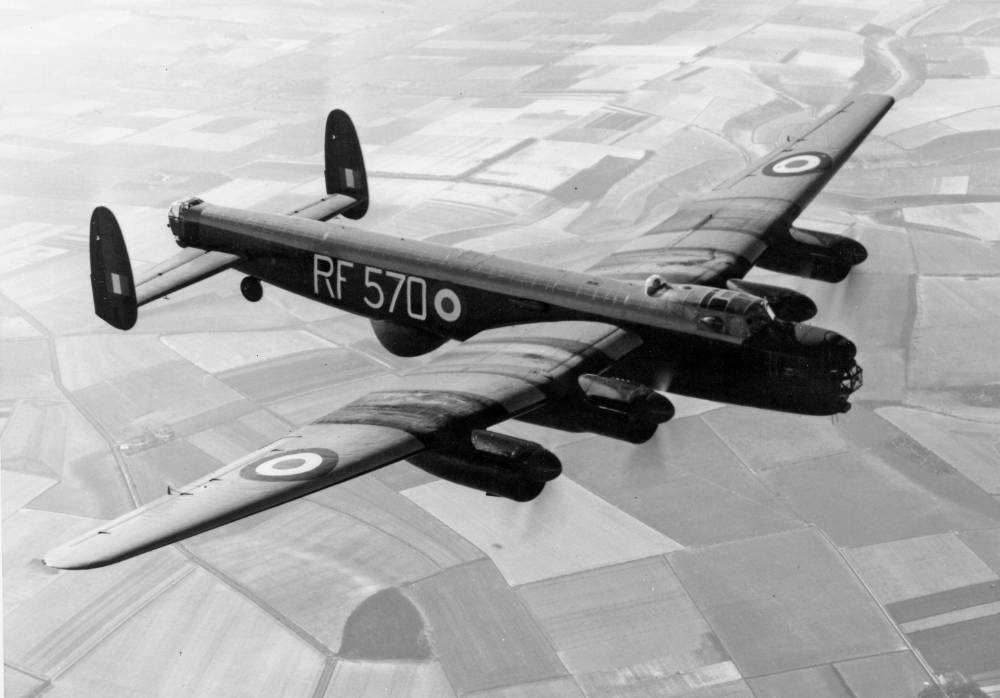
A similar Lincoln aircraft to the ones operated by 101 Sqn
Image courtesy of the Adrian Balch collection
During this period routine training was punctuated by armament practice camps in Egypt as well as participating in several mass flypasts. Although re-equipment with the Lincoln had been a relatively minor evolution, the next change was revolutionary. The Binbrook Wing was selected as the first to convert to the Canberra B2, the first jet bomber to enter squadron service, and 101 Sqn was to be the first squadron to convert.
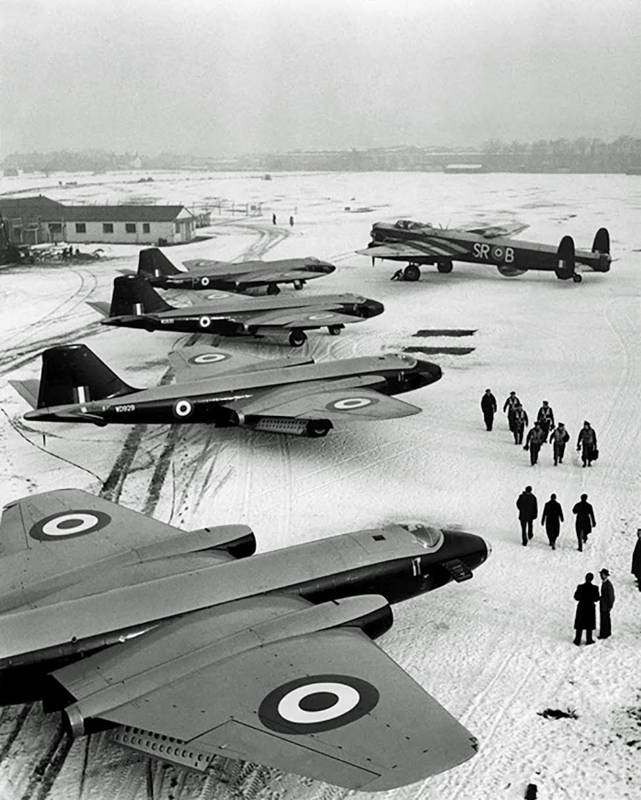
Canberras at Binbrook
Image BAE Systems
The new aircraft were delivered during the first half of 1951 with the squadron being fully operational on the new type by June. The squadron conducted much of the operational testing of the new aircraft. The intense flying programme that this required rapidly generated experienced crews which were then sent to provide experience to the rapidly growing number of Canberra squadrons. Having been successful in leading the introduction of the B2, in June 1954 101 Sqn was chosen to take the first B6s. The B6 had a 12 inch fuselage stretch, higher - rated Avon 109 engines and increased fuel capacity It was with this aircraft that, in April 1955, the squadron conducted the first live bombing missions by RAF jet bombers, as part of Operation Firedog. A total of 98 operational sorties were flown from Butterworth against Malayan insurgents. During October 1956, as part of Operation Musketeer, the squadron deployed to Hal Far, Malta. The squadron flew a small number of sorties against Egyptian airfields but by November were back at Binbrook. The squadron continued to operate as part of the Binbrook Wing until it disbanded on 1st February 1957. Having moved 40 miles West, to Finningley, the squadron reformed on 15th October 1957 to become the second squadron flying the Avro Vulcan B1.
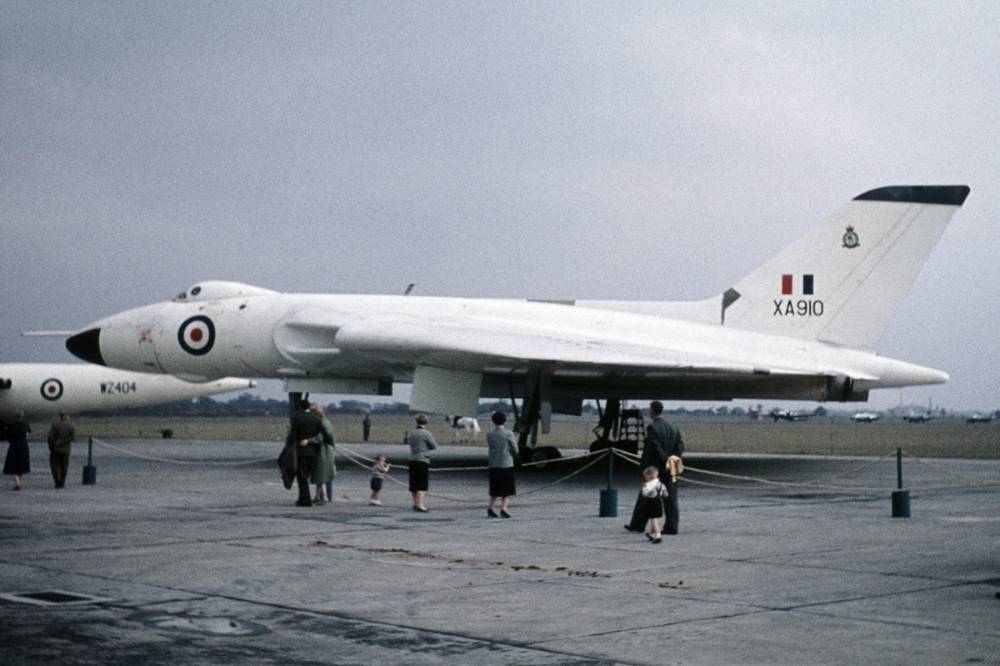
Image Courtesy of the Adrian M Balch Collection
The increased range of the Vulcan facilitated its use to “fly the flag” in a wide range of foreign and commonwealth countries; 101 Squadrons participation in airshows and commemorative flypasts proved very popular. Following a decision to concentrate the remaining Vulcan B1s at Waddington the squadron moved there in June 1961.
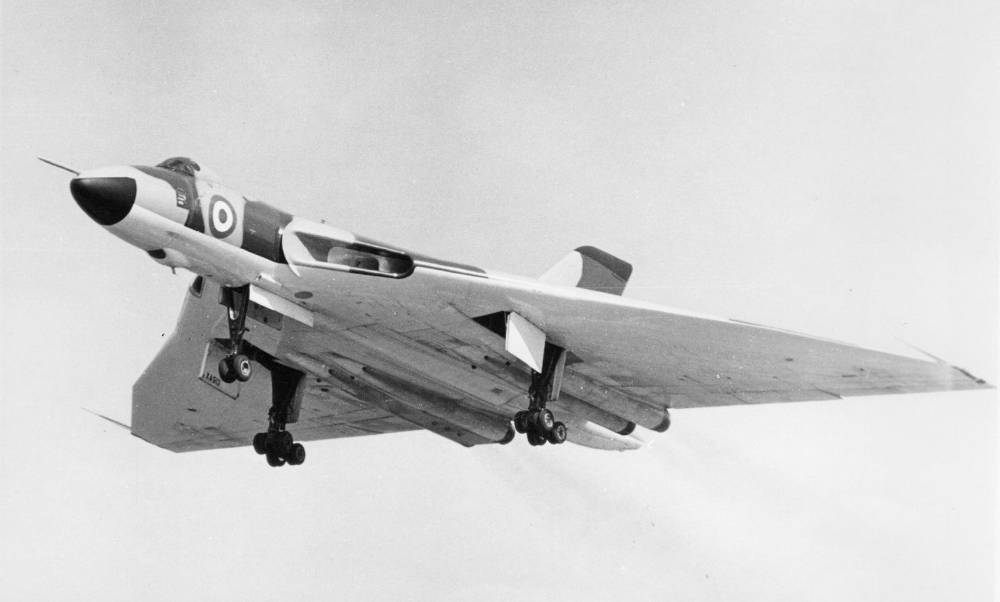
Image via Bob Johnson
Developments in the air defence system meant that by 1963 the V- Force’s original tactic of evading threats by flying too high and fast had become ineffective. In March 1963 101 Sqn became the first squadron to train in the new low-level operations. The squadron retained the original Vulcan, albeit by then designated B1A to recognise updates to its ECM equipment, until January 1968 when it became the last squadron to re- equip with the Vulcan B2.
With the responsibility for the national nuclear deterrent being transferred to the Royal Navy’s Polaris Fleet in April 1968, the Vulcan force role became tactical nuclear strike. The squadron remained at Waddington flying the Vulcan B2 in that role until the general run-down of the Vulcan force in 1982.
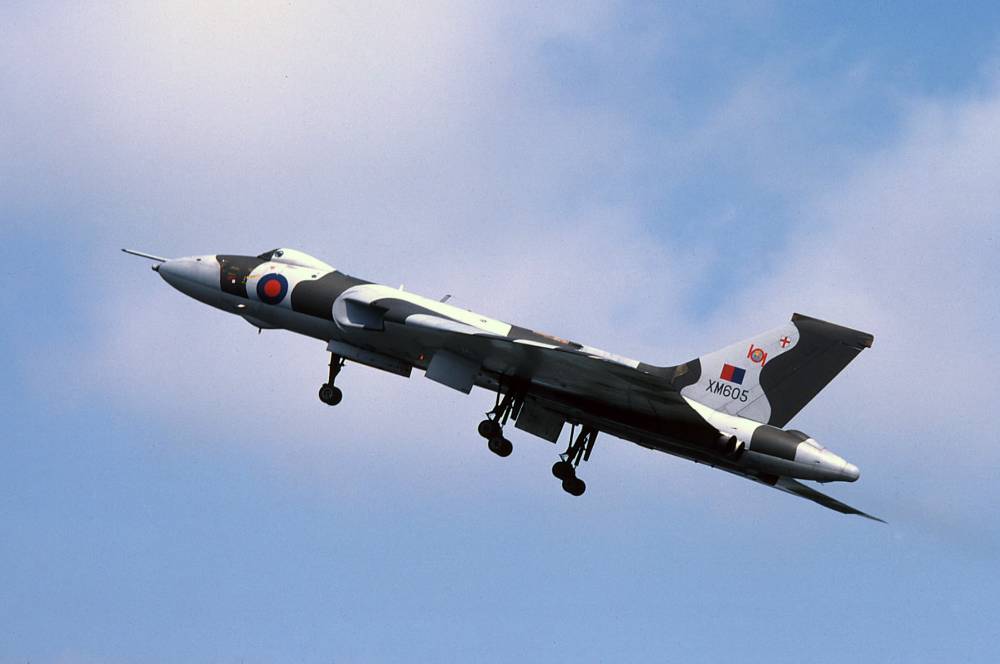
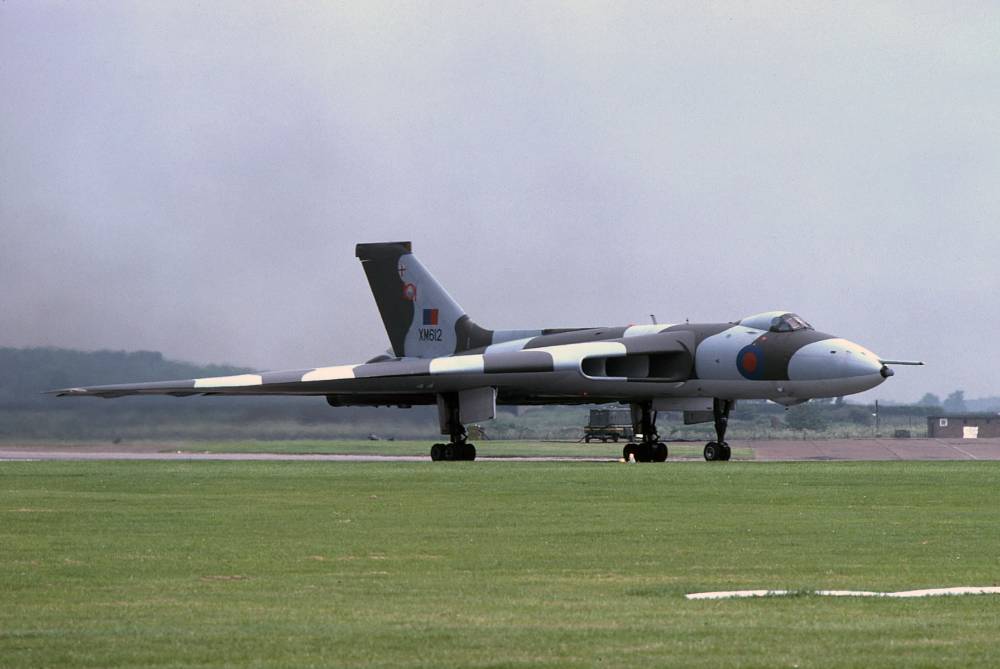
Images Courtesy of Richard O Andrews
Having operated in a nuclear role for nearly 25 years, in the spring of 1982 elements of the squadron deployed to Ascension Island in a conventional free-fall bombing role, as part of Operation Corporate. In fact it was a 101 Sqn crew led by Flt Lt Martin Withers AFC that flew Black Buck 1 the first bombing raid on the Falklands Islands. This was, at the time, the longest bombing raid in history and the first time a Vulcan dropped bombs in anger. Despite the short reprieve, the squadron disbanded on 4th August1982 as the last Vulcan bomber squadron; The Falklands War, and the air bridge operations introduced post-conflict, had demonstrated the value of inflight refuelling in a wider range of roles; compared with its previous predominant use for air defence support. These tasks were also making large inroads into the remaining fatigue life of the Victor K2. It was therefore decided to convert ex-airline VC10s to three-point tankers; resurrecting a concept originally proposed by the manufacturer in the mid- 1960s. The airframes chosen were 5 ex-British Airways VC10s, which became K2s,
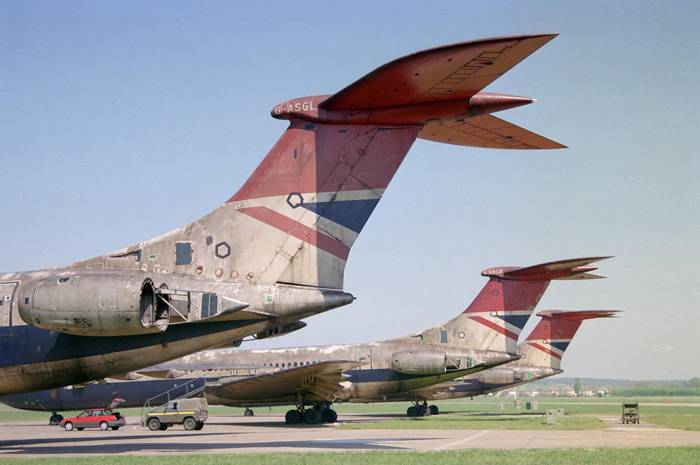
Image Courtesy of Gary Spoors
and 4 East African Airways Super VC10s which were designated K3s. Both batches had additional tanks installed in much of the fuselage giving the K2 a total capacity of 156,000 lbs while the K3 retained the wet fin raising this total to 175,000 lbs. 101 Sqn reformed on 1st May 1984 to operate the “new” aircraft, the aircraft being delivered between August1983 and May 1987.
On the 8th April 1987 101 Squadron celebrated its 70th Anniversary by breaking its own non-stop speed record from UK to Australia, set in 1963 by a Vulcan B1A. Wg Cdr Jim Uprichard flew VC10 K3 ZA147 from Brize Norton to Perth in just under 16 hours, refuelling twice in the air on the way. Twenty-Six years later, on 25th September 2013 this same aircraft would make the final VC10 flight from Brize Norton to Bruntingthorpe.
BAC VC10 K2 and K3
By 1990 the final retirement of the Victor K2 was approaching, and British Airways had recently retired their remaining Super VC10s. The RAF acquired the remaining airframes which were delivered to RAF Abingdon for storage pending a decision on their future. In the end a contract was taken out with BAE for the conversion of 5 of the airframes to K4 standard, while the remainder were subject to spares recovery. The K4 lacked the fuselage tanks of earlier conversions limiting their fuel capacity and also had no centre line HDU.
BAC VC10 K4
The last K2 was retired in March 2001 but on 14th October 2005 the remaining C1Ks in service with 10 Squadron were transferred to 101 Sqn. Thus 101 Sqn started the final phase of VC10 operations with a fleet consisting of 4 K3s, 3 K4s and 11 C1Ks.
BAC VC10 C1K
During its VC10 years the squadron participated in each of the UK’s major military involvements. The first major operational use of the VC10s came during Operation Granby, the UK contribution to the first Gulf War. During late 1990, in the build up to hostilities, the squadron flew more than 700 sorties. During the 6 weeks of hostilities the squadron flew an additional 381 sorties totalling about 1400 flying hours. With the end of hostilities there was a rapid drawdown of UK deployments in theatre which kept the squadron extremely busy. In early 1992 the squadron returned to the Middle East when a 2 aircraft detachment was established to support the Jaguars monitoring Iraqi activities under Op Warden. This commitment was to last 5 years.
Over the next 21 years, in addition to the standing tasks supporting UK Air Defence, the defence of the Falklands Islands and commitments to NATO, the squadron were continuingly deployed on operations. From April to June 1999 the squadron supported Op Engadine in support of NATO operations in Kosovo. A total of 95 sorties resulted in 2128 tonnes of fuel being delivered.
The first decade of the new century saw continuing deployments in support of operations related to the campaigns in Iraq and Afghanistan.. Then in February 2011 came Op Ellamy in support of the enforcement of the Libyan no-fly zone
VC10 K3s ZA150 and ZA147 on the last operational flight 20th September 2013
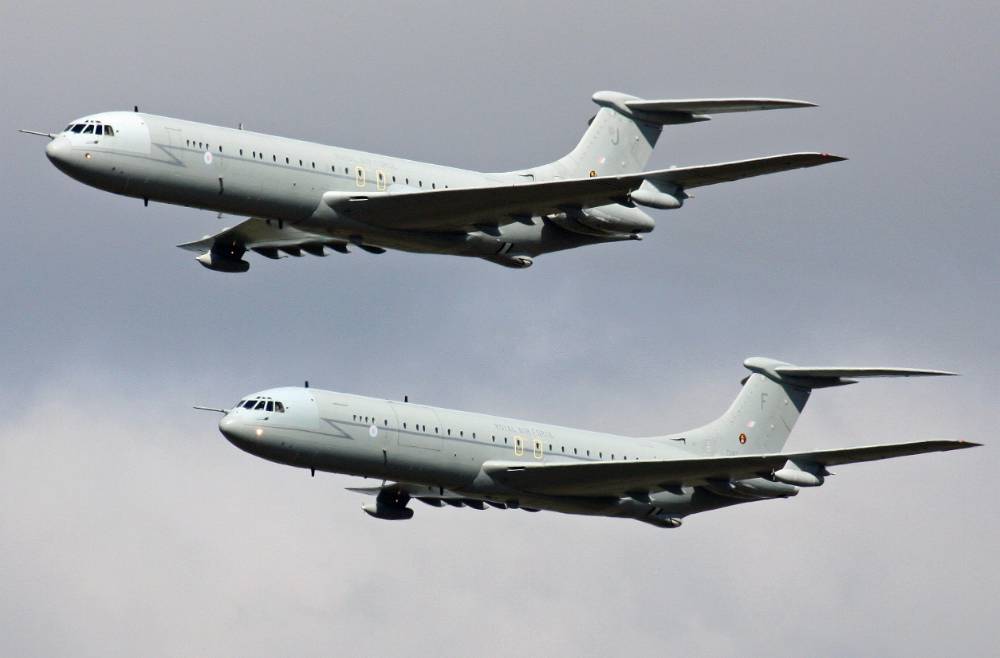
Image Courtesy of Adrian M Balch
With the end of the long career of the VC10 rapidly approaching, it was announced that following the end of VC10 operations in September 2013 the squadron would re-equip with Voyager. In July 2017 the squadron celebrated the centenary of its formation with a seemingly secure future.
The A330 Voyager
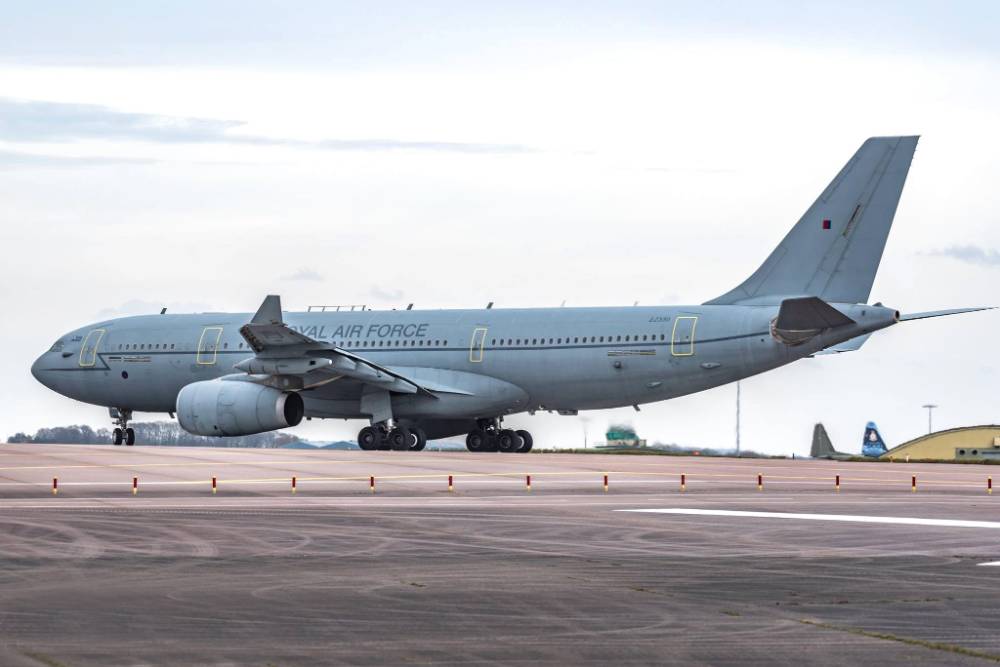
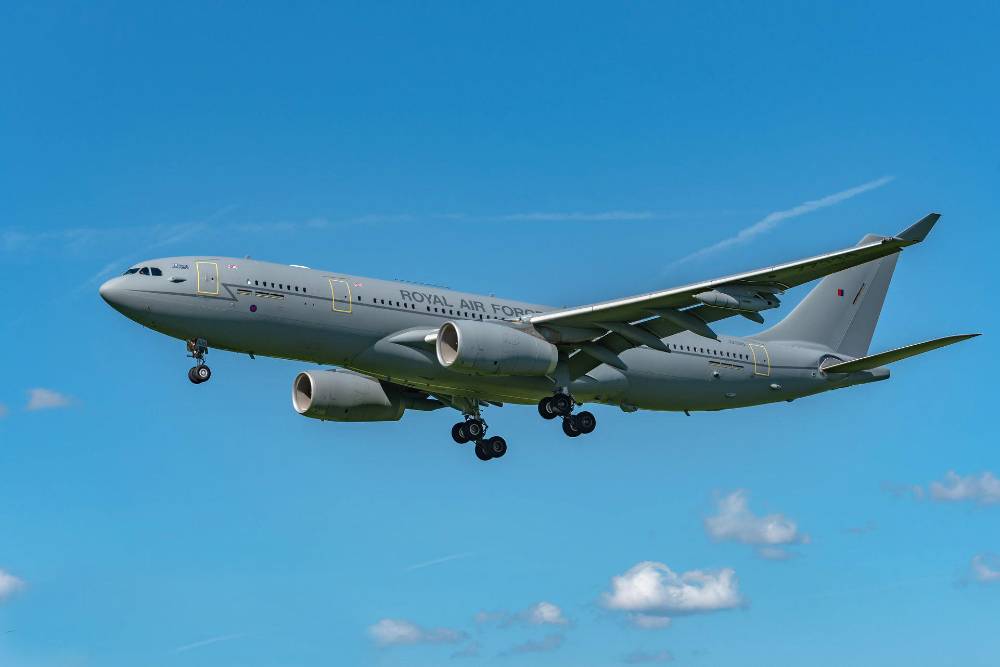
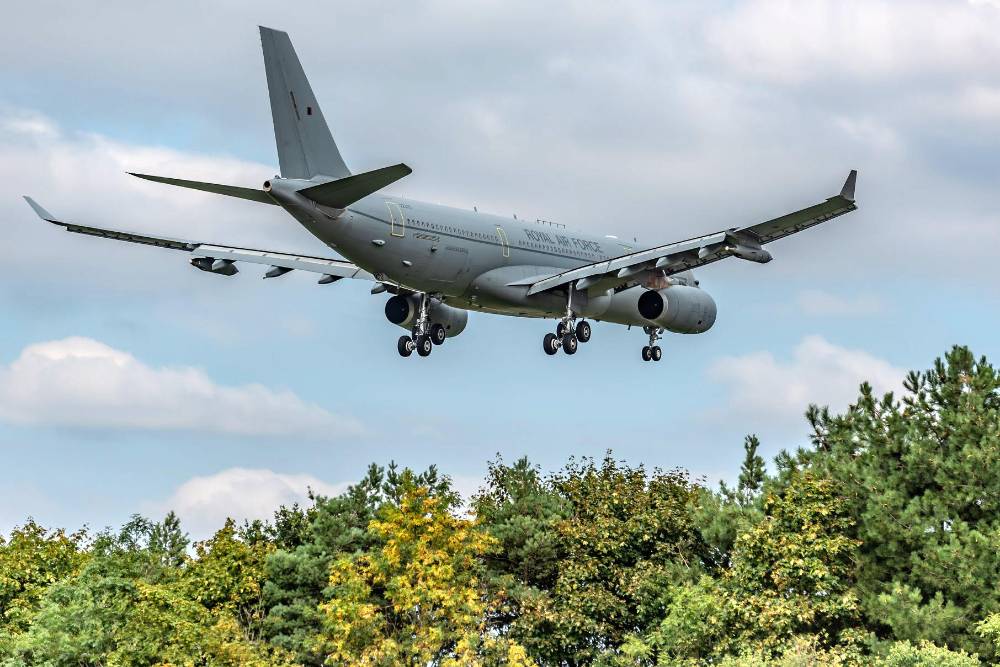
Images Courtesy of Brent Maartens
Battle Honours : Western Front 1917-1918*, Ypres 1917*, Somme 1918*, Lys, Hindenburg Line, Fortress Europe 1940-1944*, Invasion Ports 1940*, Ruhr 1940-1945*, Berlin 1941*, Channel and North Sea 1941-1944, Biscay Ports 1941-1944, German Ports 1941-1945, Baltic 1942-1945, Berlin 1943-1944, France and Germany 1944-1945, Normandy 1944*, Walcheren, South Atlantic 1982, Gulf 1991, Kosovo, Iraq 2003-2011, Libya 2011